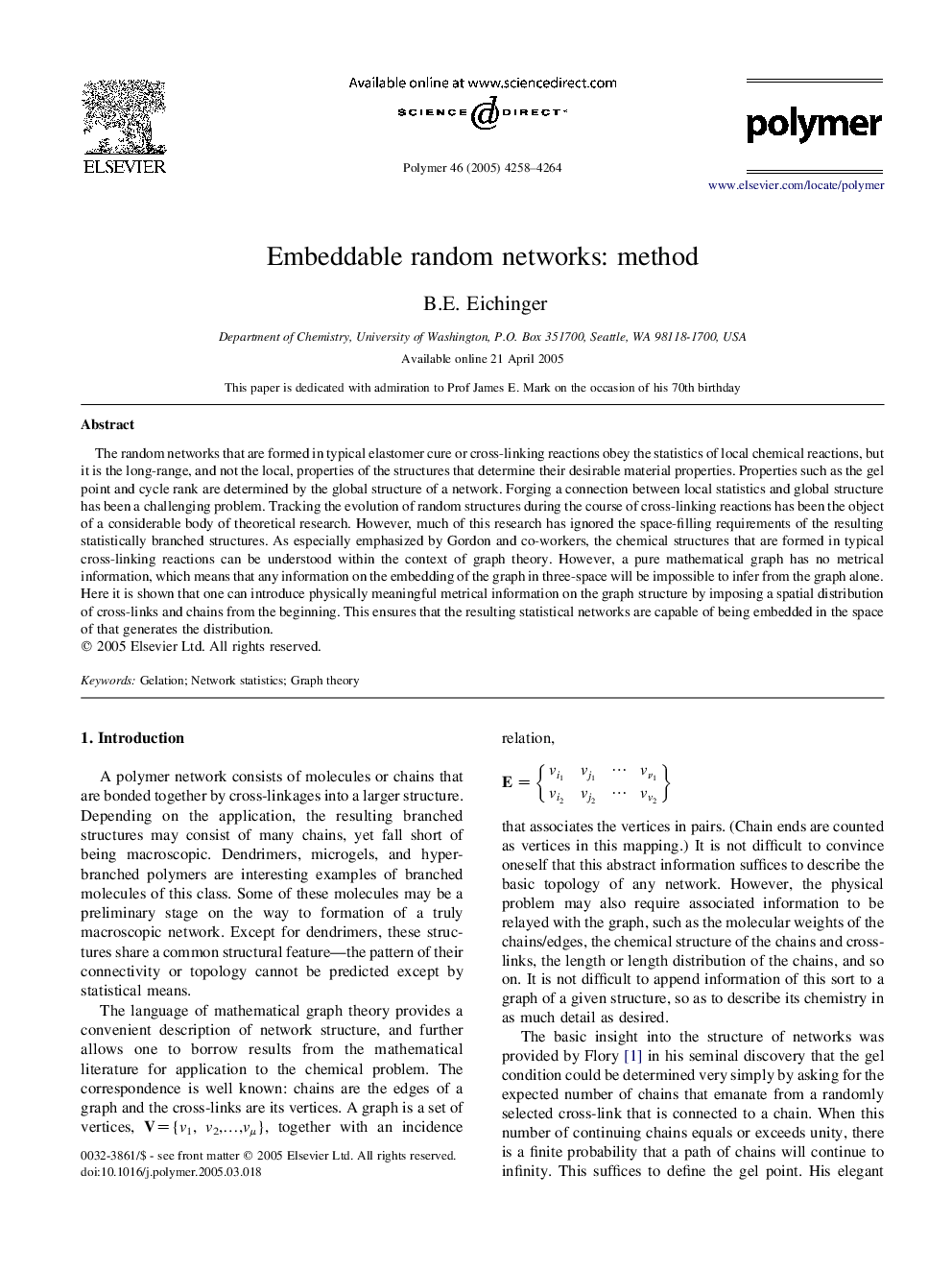| Article ID | Journal | Published Year | Pages | File Type |
|---|---|---|---|---|
| 5191878 | Polymer | 2005 | 7 Pages |
The random networks that are formed in typical elastomer cure or cross-linking reactions obey the statistics of local chemical reactions, but it is the long-range, and not the local, properties of the structures that determine their desirable material properties. Properties such as the gel point and cycle rank are determined by the global structure of a network. Forging a connection between local statistics and global structure has been a challenging problem. Tracking the evolution of random structures during the course of cross-linking reactions has been the object of a considerable body of theoretical research. However, much of this research has ignored the space-filling requirements of the resulting statistically branched structures. As especially emphasized by Gordon and co-workers, the chemical structures that are formed in typical cross-linking reactions can be understood within the context of graph theory. However, a pure mathematical graph has no metrical information, which means that any information on the embedding of the graph in three-space will be impossible to infer from the graph alone. Here it is shown that one can introduce physically meaningful metrical information on the graph structure by imposing a spatial distribution of cross-links and chains from the beginning. This ensures that the resulting statistical networks are capable of being embedded in the space of that generates the distribution.
